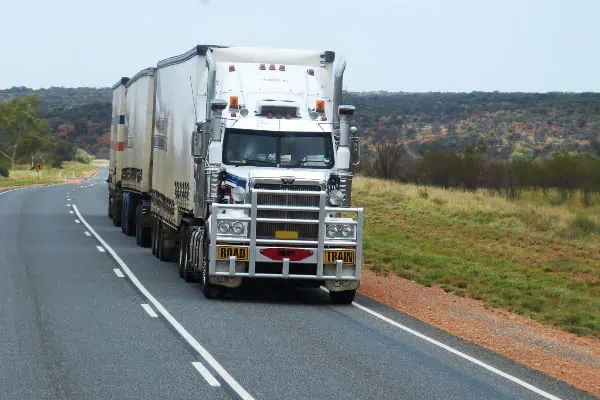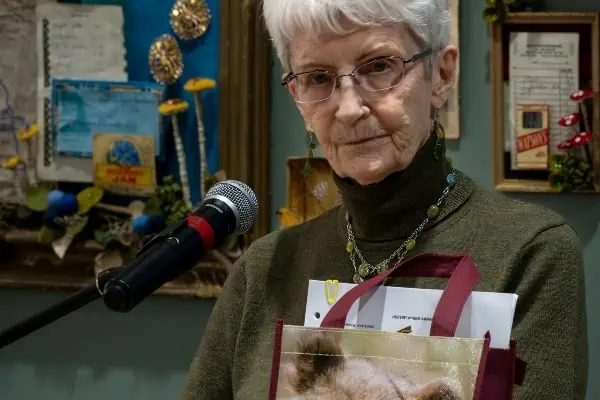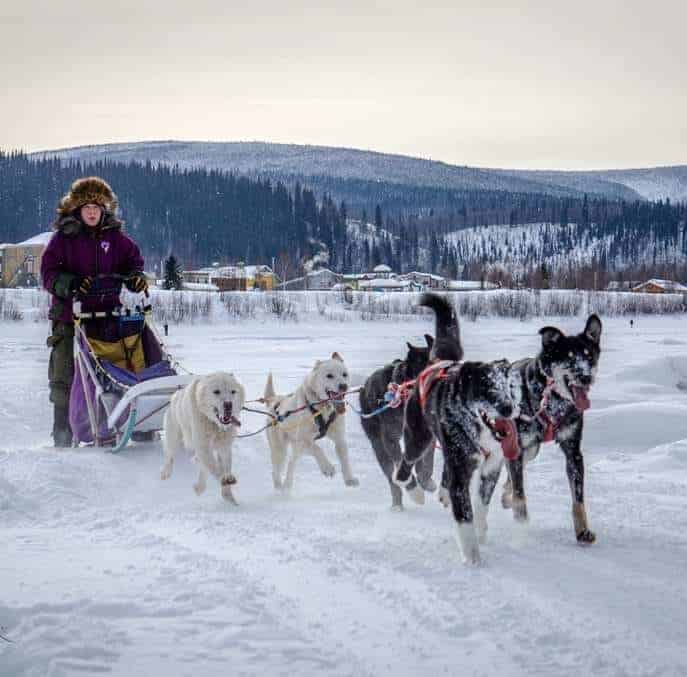
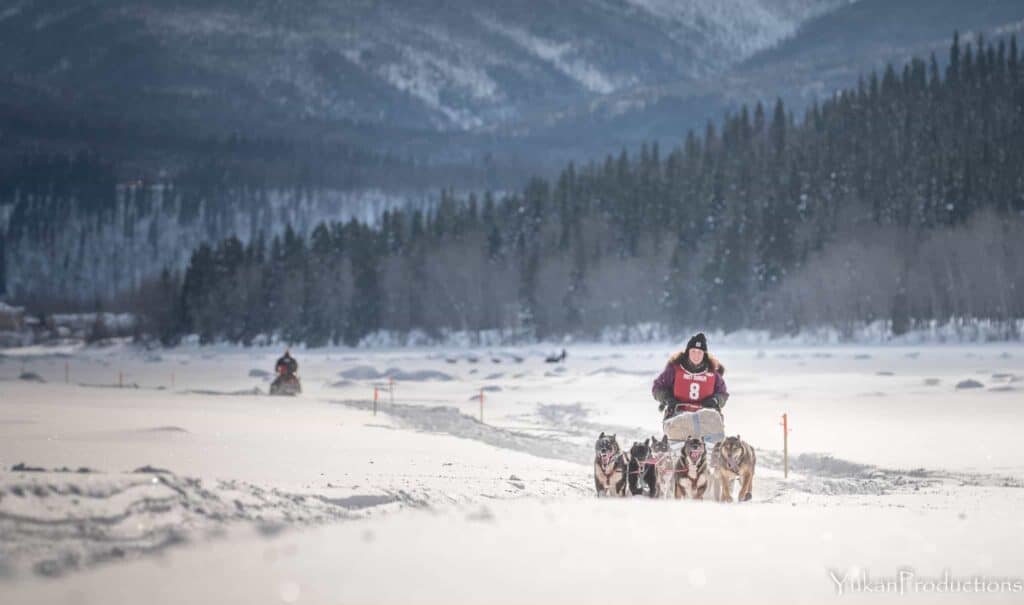
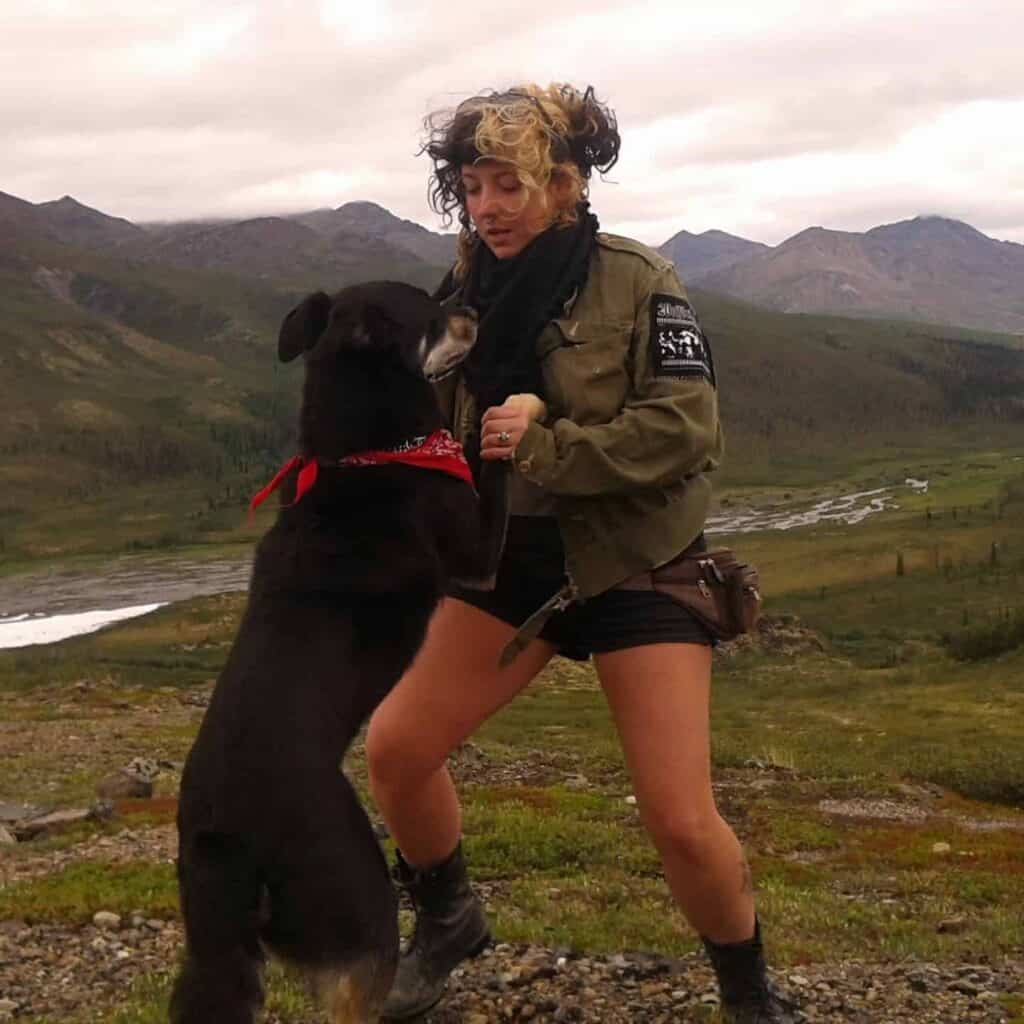
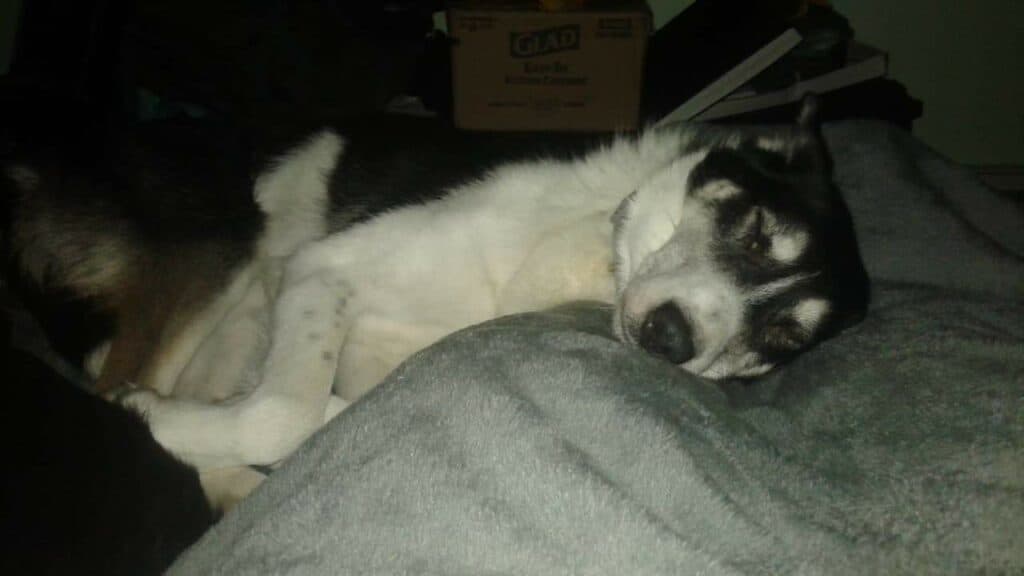
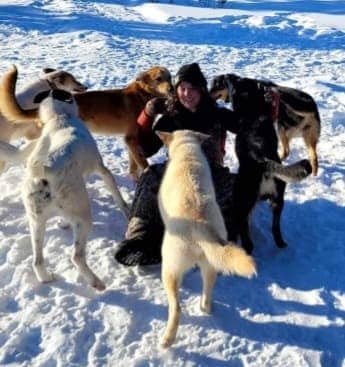
Part 1
Over the holidays I had the opportunity to interview Jess Sears, a dog musher based in the Whitehorse area. During our discussion she talked about her upcoming race, the Yukon Quest 250, and her aspirations for the Iditarod. She also shared how dog mushing literally changed her life and gave her a new tomorrow.
Can you describe what your life was like before dog mushing? Did mushing change the course of your life?
I left home pretty early, late teens, then bounced around from place to place doing a lot of different jobs, hitchhiking, riding trains and travelling around the country. I was a complete vagabond and wasn’t tied down to many responsibilities. I ended up having a really bad ski accident that left me on disability and I became tired of moving around so much. I decided to make a final push and travelled north to Dawson City, with the intention of morel-mushroom harvesting. I was really ready to settle down at that point. Dawson was my literal end of the road. Through all my travels, I was waiting for a place to feel like home, and nothing did. Dawson was as good a place as any to build upon my long-term goals. I made it to Dawson with twenty dollars in my pocket. And though I arrived down on my luck, I ended up getting pretty entrenched and found lots of opportunity there.
After a little more bad luck, I couldn’t afford to leave Dawson so I stayed and worked at a hotel, thinking I was going to leave in the spring, but when spring came I had fallen under the spell of the Yukon.
I came up to Dawson with my one all-time soulmate companion, sheepdog/guardian dog named Pollo. He was about seven or eight years old at that time and I had travelled across North America with him. He was with me in vineyards, pulling vines out of the lines, and he herded sheep and protected livestock when I worked on farms. I started dog mushing with him using sheep commands, actually!
In Dawson, I had basically found a way to be the “crazy dog lady.” I took the opportunity to get more skilled at things I had done before and to learn new skills. In the South, the tools were taken from my hands, but in Dawson I was given a fair shake and felt welcome.
While I was working at the Humane Society in Dawson, a five-month-old puppy showed up at the shelter. At first, the puppy would not come out of his crate. He was in rough condition, completely feral … like to the point of eating spruce tips off of trees. I used my dog Pollo to test the temperament of the dogs that would come through the shelter. Pollo would sit in the office, and the puppy would lie down right next to him. I had always wanted a second dog and this was the one Pollo had chosen. I decided to try him out. It ended up taking me years to domesticate him. It took forever to even hold him by the collar because it had grown right into him in his former life. But that spring, I mushed the then six-month-old puppy with my dog Pollo. The puppy was so high energy, but the pairing worked somehow. I named him Lucho Libre (in Spanish, lucha libre means “Free Wrestler”).
Everything changed when I got that second dog. It represented my commitment to settle down. And that decision changed my housing options. I couldn’t live in town anymore!
Next came another dog from the shelter, a six-year-old named Chi Chi. The names up to this point had been in Spanish, reminding me of the time I had spent down south. Pollo, Lucho and Chi Chi were the three amigos.
One thing led to another. I did not intend to mush, per se, but thought maybe I could get a job as a dog handler because I had dog experience from the farms I worked at. I started running other dogs from the Humane Society with my three dogs.
Someone said “Gee!” and “Haw!” and someone donated a kicksled to the shelter—and that was that!
I started with local trips on my kicksled. My first real adventure was 17 miles upriver, to visit a friend. I had found a way to still travel while feeling more grounded by staying in Dawson. My previous life of intense and constant travel across the country changed to a slower pace, with my dogs, over shorter distances.
I started volunteering for the Percy DeWolfe and Yukon Quest dog races and watched the dogs come in. I would ask every musher I knew to take me out mushing and to have my dogs run with their teams.
I had a small team of “non-professional” dogs who didn’t really know anything about mushing; so, yeah, we crashed into a lot of stuff! It was a rough start at the beginning, but I’ve always been a person who isn’t deterred by things being tough. My personality enjoys the rush of self-confidence when overcoming things.
How long have you been mushing for? When did it become more than a hobby, or has it always been? And was there a pivotal moment that changed your relationship with the sport?
I moved to Dawson around the end of 2015 and probably didn’t start running dogs until about 2017. It all started with that second dog, Lucho Libre. The following winter, I met someone who also had dogs, and they [loaned] me a dog sled. Once I had more than two dogs on my sled, I became more motivated to do more distance and added in dogs.
My first race was in 2018, the Percy Junior. We did pretty good, given the abnormal weather and technical difficulties. It was plus-15 degrees Celsius out and we were wading through overflow up to my thighs. My team was a motley group of dogs—some mine, some borrowed—and we came in Fifth Place, which was pretty good. Right off the bat, at the start line, we snapped the main stanchion on the sled (this is what helps you steer and move). The whole race, that sled kept turning left. Our alignment was off, right from the start, and we kept falling off the trail because of it. It took me a week to recover after that race!
I had a lot of borrowed dogs on my team, with only three being mine. When the going got tough out there, the dogs who gave it up for me were my two second-chance dogs from the Humane Society—Lucho Libre and Chi Chi. They did whatever I asked them to do. They put their whole heart into it.
The experience of that first race gave me a goal.
After dropping out of university, years of being on the road and my head injury, I never reached out for anything … because there was no more inspiration in my life. Those sled dogs gave me a reason to reach out. My behaviour changed. I knew I could have another dog if I gave up a case of beer a month. My self-medicating switched. During the hard times, my dogs reminded me of what I was doing and why I was there.
Chi Chi has passed away now and I wish I had another dog like her. She is my standard—a long, lean greyhound-looking Alaskan with border-collie fur. I wear a beaded patch of her face on my parka and she now rides over my heart. If I was a sled dog, Chi Chi would have been my embodiment. She had a rough former life, but given my attention and nurturing, she became my best dog. When she was given love and the chance to thrive, she did, and I felt that for myself—an outer reflection of how I felt for myself and how cause and effect works for every living creature.
My original older dog, Pollo, saved my life. I was really depressed and living with severe, undiagnosed ADHD. He made me want to stick around. Pollo meant I couldn’t “peace out,” even in my darkest times. I had to stick around for him. Lucho Libre and Chi Chi grounded me and [that] meant I had to stick around and couldn’t take off. They anchored me in place.
What are some of the most-difficult aspects of dog mushing, and some of the best experiences?
Depends on the time of year and what else is going on in your life. Being there for your dogs, 365 days of the year, is a pleasure. But it also means sacrificing a lot. Every time you want to do anything, you need to consider, Are my dogs going to be taken care of? You need to trust the person who is looking after them. You need to have money in the bank. If your dog needs the vet, nothing comes before your dog (dogs eat first).
When I was travelling, it was one dog and myself, and now I have thirteen dogs who need me. It is a pleasure, but sometimes you get sick and have to keep taking care of your dogs, or it’s minus-50 degrees Celsius and you have to feed them multiple times a day. Sometimes you get injured and need to haul buckets of food out to them. There is a physicality to it. When you are doing great, it is great. When it is hard, it gets hard fast.
I have a family of intuitive and impressive animals. They are full of surprises. When I run them as a team, they all run together. The movement of many legs, hearts and feet literally feels like magic, like flying or running with a pack of wolves.
Dogs understand what is important: staying warm, family, good relationships with the beings around you, companionship, food, water and shelter. When you travel with dogs, you are on an adventure all the time. They belong to you, but you wholly belong to them. For someone who has spent a lot of time feeling un-belonging, they are what give me a sense of belonging. My dogs don’t judge me; they think I am the hero of every story.
Is it a challenge being a female musher?
I am starting to meet more and more female mushers, and even those who I don’t meet in person, I gravitate towards them, novice or experienced, and admire their durability. They are strong women who support one another.
In the races, we all compete against each other, male or female. There are advantages and disadvantages to being a smaller physique, a smaller human. The weight on the dog sled is less but you also need a certain amount of fitness to hold on to the sled. Since I started, I have become much more physically strong. It’s inspiring because a lot of women who mush have found acceptance in being physical and having an “I can do it” attitude. The biggest downside is I wish I didn’t have to take my snow pants down to pee!
There is the mentality that the up-and-comers need to prove themselves, as a musher, for acceptance by the older generations. And throughout my travels, people comment “Aren’t you strong for a little weight!” People just assume you can’t and seem surprised when you can. “You actually did that?” they say. It would be great if the response was more of a compliment, rather than a shock.
The mushing community around Whitehorse is pretty supportive, and I reach out to other female mushers that I admire, from Alaska all the way down to the Lower 48. I volunteered out at the checkpoint at Clinton Creek, north of Dawson, for a few days on the Yukon Quest race. I kept the water warm on the wood stove for the resting dogs there. That’s where I met the musher Laura Allaway. She was running the race with her fourteen or fifteen dogs. She was so down to earth and worked as a waitress and in a tour kennel, as a guide, to support herself. She was an everyday person like me but [was] running one-thousand miles with her dogs. She was this amazing woman, doing it all on her own. These women are getting out there and living their dreams and goals, and doing whatever it takes to get there.
There are so many female mushers who share in their bios and on podcasts about their experience. It is like the little train engine that could. You can’t expect to get reassurance from the outside, so you have to tell yourself “I think I can”—especially those who aren’t raised in the mushing life.
Mushing causes you to pull on the power of self-belief. No one is going to do it for you. When everyone is out having fun, you are home with your dogs. You are doing it for yourself and your dogs. I think it is harder for women to build the inner dialogue that says “I can and I will. If I can’t, I will learn!” But I believe mushing helps build this self-confidence. In a situation, no matter how tough it gets, you must keep going.
I wish more women would start out in life with that confidence. I didn’t. It took a lifetime of moving around, of mental health issues and homelessness, and feeling like a stray all of the time. Overcoming that has been a huge accomplishment that has lifted me up to ask myself Now what do I want to do? Once I got into mushing, I felt like part of a pack and could reach out to people with this common interest.
What does your typical dog-mushing day look like? Can you also describe an atypical day?
Lots of days are atypical, but there are two things you can count on doing every day with your dogs—feeding them and scooping poop.
In the winter, I make soup for them with warm water and ground meat. I chop up the frozen ground meat and bring it inside to thaw. Off-grid, that means getting the fire going and making hot water. I chop the meat, soak the kibble overnight, beforehand, add fish oil and supplements and take the ground meat and kibble and mix it into a stew. I feed them, then get them all out of their doghouses and check everyone and scoop their poop. In winter, I do this routine twice a day, every day. In summer, it is kibble with water in their dishes, and scooping. Off-grid, this means hauling water from a creek or filling-up in town or at a water station. It means chopping firewood and loading the fire.
After the dogs eat, they will howl. I know what the howl sounds like for each of my dogs; they sing me their song.
On training days, the dogs need to be souped before they run. They need their booties and coats and harnesses. When I hook them up, they are all yipping and yelping! Then we run, and after the run I check everyone over, take off their harnesses and let them loose in the dog yard. Then I put all the dogs away, and whatever is left of my day, I am chopping more meat and making more food; then, of course, whatever repairs need to be done and the regular non- musher people stuff.
On a non-training day, I let them all loose and check them over and massage them. I check to see if they are moving slowly or if anything is off physically. Their gait will change with an injured toenail. The musher knows their dogs best.
A non-typical day might include a loose dog, an injury, an adventure, veterinary care, nail trimming, teeth checking and/or treating foot injuries.
At the end of my day, I’ll bring a couple of dogs into my cabin to sleep (and rotate through the team). They come inside and curl up on the couch and get super-concentrated pets and care. I do obedience training in the house, with a treat bag. Commands like sit, lay down, etcetera. It makes it easier to take care of them when they know these commands, and it makes me less worried about them destroying the house. When I ask them for a paw—say, when I need to look for foot injuries—they’ll give it to me.
Can you tell us a little about your current dog team and how they came into your life?
Chi Chi really set the scene: her body type and what she looked like, and her personality. Similar to her, I look for long-legged, fast dogs. Before mushing, I was a border-collie person; so, similar to them, I like smart dogs and also want my sled dogs to be able to be pets.
I wanted a four-to-six dog team, to start. I met a musher, during the Yukon Quest, who had a dog that wasn’t his kind of dog, but I found the dog to be pleasant and friendly and a bit shy. Turns out he didn’t give him to me after all, but his main bitch and that dog had puppies and he said I could have one of the puppies. He lives in Tok, Alaska. On our way from Dawson to Tok, to pick up the puppy, we were stopped at the border and they told us that the border was closing for the season. We didn’t realize it was closing, so we rushed to Tok and only spent fifteen minutes there picking out the puppy from the litter. I wanted a female puppy and there were only two females. So, I called out “Puppies, come!” and the puppy who came to me was the one for me. I grabbed her, gave money to the musher, filled up with gas and we drove back to the border as quickly as possible. We could see the lights at the border and we made it with one minute to spare before the border closed down for the rest of the year. Then Covid hit and shut the border down for years!
The lucky puppy from Tok became the mother of my current breeding. Her name is Pippi. She is smart, gentle and friendly and is a smaller size, only forty-five pounds. Pippi’s grandfather was on a winning team of the Yukon Quest in 2017. And Pippi’s dad and mom have run and finished multiple Yukon Quests. Pippi has that same drive. She levitates and chirps when we hitch up. She is the heart of my kennel. I got her after Chi Chi passed away, and the spirit of Chi Chi was kind of in Pippi. I named Pippi after Pippi Longstocking, the little girl who was an orphan. An incredible girl who could do anything she put her mind to. A small girl of incredible strength, just like my leader. Pippi is currently three-and-a-half years old and mostly runs single leader, or I pair one of her puppies with her.
I knew I wanted to breed and raise puppies. I bred Pippi with my best friend’s dog, from Eagle, because their dogs are friendly and have good feet and coats. Pippi had seven puppies and I kept five of them. They were born on June 21, summer solstice, and the first puppy born was red. I had always wanted a red dog. I gave them all maritime names to represent my Nova-Scotian roots: Harbour, Bouy, Wickie (an old-fashioned name for the person who trims the wick on lighthouse candles: she is all white, with a red head—like a lighthouse), Kinnikinnick, and Arctic Tern (named after a bird who finds her way in every weather … she almost died as a puppy and I syringe-fed her into life). The puppies are a year and a half now. Their bloodline is fast, with Brent Sass, Mitch Seavey, and a little bit of John Baker as the main parts of the bloodline. These are the names of the mushers whose dogs the bloodlines come from.
I also adopted two more puppies at the same time as the puppies: Pippi’s first cousin, named Gooskap Trail; and Kejimkujik, meaning “where two spirit worlds meet” in Mi’kmaq language. GoosKap Trail is a year and a half, and Kejimkujik is six months older at two years old.
Lucho Libre is still at the heart of my team at seven years old; and Guss, a borrowed dog, is also part of my team. Guss and Lucho Libre run wheel together (or the position closest to the dog sled). They are both second-chance dogs, and are both a little insecure, but they run really well together. They’re my two tough run-up boys.
Although Pippi often runs lead, every dog on my team is capable of leading. All of her puppies lead with her. The next super-star leaders are Arctic Tern and Gooskap. If they do well, they will be my next breeders. If the terrain is really technical, I put Pippi in lead on her own. The puppies are really good at obedience. If I call it too quick, they will jump towards a snowbank and I get more than I bargained for!
What does the training involve? Is the training limited to running the dogs, or does it involve your whole life?
Training does involve the whole of our lives.
It involves running and conditioning. For strength training, I start with hooking up the team to a quad and then with my tundra snow machine in snow, and they literally pull the sled without any gas assistance for a good majority of the run. We add more miles and gradually work up to longer and longer runs for endurance. I will be running longer races with this younger team, which could be a challenge, but at the same time we have such a close bond, which is a benefit. The five main puppies were born beside my bed, so training started Day One with handling and obedience training. They learned basic commands at just a couple months old.
I think sled dogs can be more than just running dogs. So far, I have been having success with them because of that strong bond. We started when they were puppies and have done a lot of things to reinforce their training. I also added therapy-dog training, as I work in home care. One puppy really loves babies and will come up and put their head on your lap. I also bring in some agility and other dog sports training to keep them mentally occupied. An exercised and trained dog is a happy dog. These dogs are very high-drive and need an outlet. The puppies had very smart parents, and a smart high-driven dog can get into a lot of trouble without the proper outlets.
Training comes in the form of handling them and exposing them to different situations, like wild horses, moose, bear and wildlife on the trail. They are going to look to you and trust the decisions you make. It’s all about trust. They can literally pull me with the break on and keep going if they want to. They can get into trouble when travelling on ice and in cold weather. So, there are a lot of trust-building exercises, which happen pretty organically by existing with the dogs.
It does involve your whole life. The things you give up and the things you gain, it’s all interrelated. Working another job for kibble, it’s all for what fulfills your life. Every time you feed them, it’s a training opportunity. You can check their health, how they’re eating. Even bringing dogs into the cabin at night teaches them how to rest. Sometimes I take my dogs and visit friends and go camping and hiking. I don’t go anywhere, really, without some of the dogs. Exposing dogs to people and socializing them is important. In races, the dogs need to be able to handle the stress of running down start and finish lines with a lot of people and other dogs, so they need to be able to handle that level of stress and stay focussed.
Every time you are in proximity of your dogs, there is an opportunity to learn something from them, and them from you. They are pack animals in a hierarchy, so even when you’re not intentionally training them, you are training them.
See the conclusion of Kay Linley’s story in the Jan. 25, issue of What’s Up Yukon

